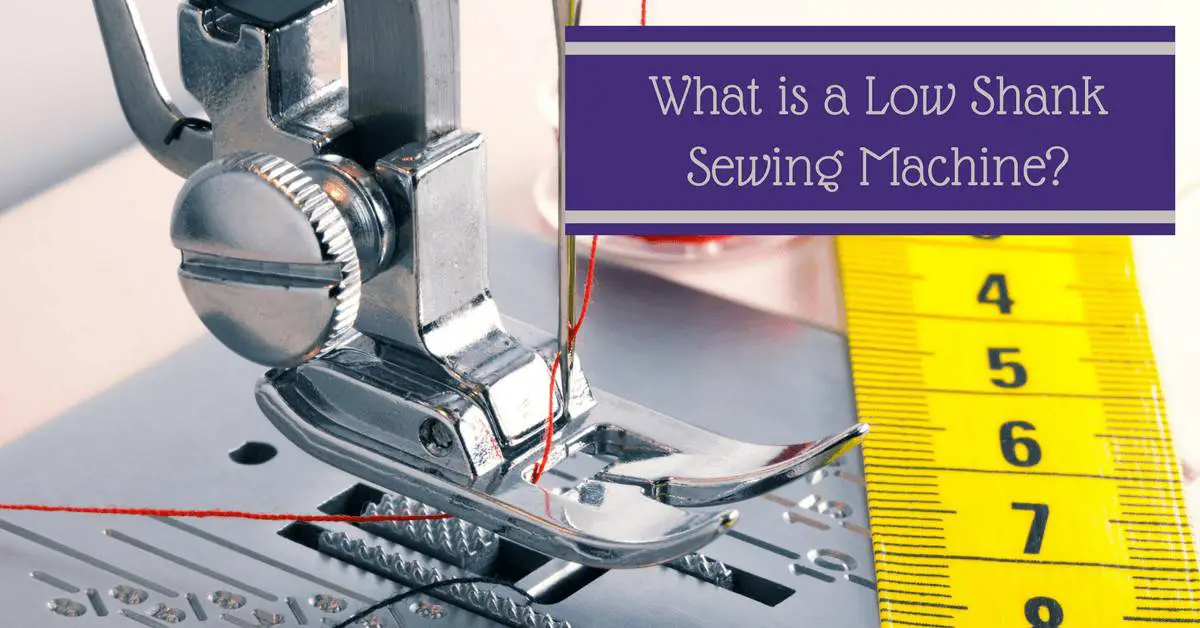Have you ever been in the process of sewing a zipper, button hole, or hem, and felt that your universal presser foot just wasn’t up to the job? I have. Have you ever tried to install a new foot, only to find that it is not compatible with your machine? I’ve been there, too.
Just as a variety of presser feet are available to meet your sewing needs, there are a variety of shank types for mounting the feet. Identifying the system used by your machine will make for a more enjoyable sewing experience. If you are looking to purchase your first machine, understanding these types will be invaluable to choosing the right machine for you.
What Is a Shank?
Before you can determine your machine’s shank size, you may be wondering, “What is a shank, anyway?” The shank is the metal rod to which the presser foot is attached. Most modern consumer sewing machines are low shank in design, meaning the distance between the bottom of the presser foot and the attachment screw measures 3/4 inch. These machines afford the greatest variety of presser feet for hobbyists.
When using a low shank sewing machine, a plethora of time-saving presser foot options are available. For example, a zipper foot will allow you to sew very close to the zipper coils, improving zipper function and appearance. Buttonhole feet enable you to keep all your buttonholes the same size and shape and to repeat the pattern quickly. A blind hem foot creates a nearly invisible hemline for skirts, dresses, and other garments. Jeans feet allow you to sew tough materials like denim neatly. These are only a small sampling of the presser foot types on the market today.
Low shank sewing machines are highly recommended for beginners. Why? When you invest in your first sewing machine, you want a machine that will meet your needs for years to come. The versatility of low shank machines ensures that you will not need to upgrade the entire machine the first time a project calls for specialized tools.
What If My Machine Doesn’t Use a Screw?
Some newer sewing machines have omitted the screw-on design in favor of snap-on presser feet. If this is the case with your machine, you need not worry about shank size, as any snap-on feet will fit your machine. Generally, snap-on machines are considered low shank.
What If My Machine Doesn’t Measure 3/4 Inch?
If the length from the bottom of the presser foot to screw is greater than 3/4 inch, this means your machine is either a high shank or slanted shank sewing machine. If the foot to screw distance is 1 or 1 1/4 inches, you have a high shank machine. Many commercial machines have high shanks, as do some quilting machines, such as those made by Necchi and Kenmore.
Another machine type is the slanted shank. These now-rare sewing machines were produced by Singer in the 1960s and 1970s. If your foot to screw distance measures 1 1/8 inch and the shank is mounted at a slight incline, you have a slanted shank machine.
Will using a machine other than a low shank sewing machine hinder your projects? It doesn’t have to. While a wider variety of presser feet are available for low shank machines, high and slanted shank machines can still get the job done. If using an older machines, such as one with a slanted shank, browse online marketplaces for discontinued accessories and feet. Happy sewing!


